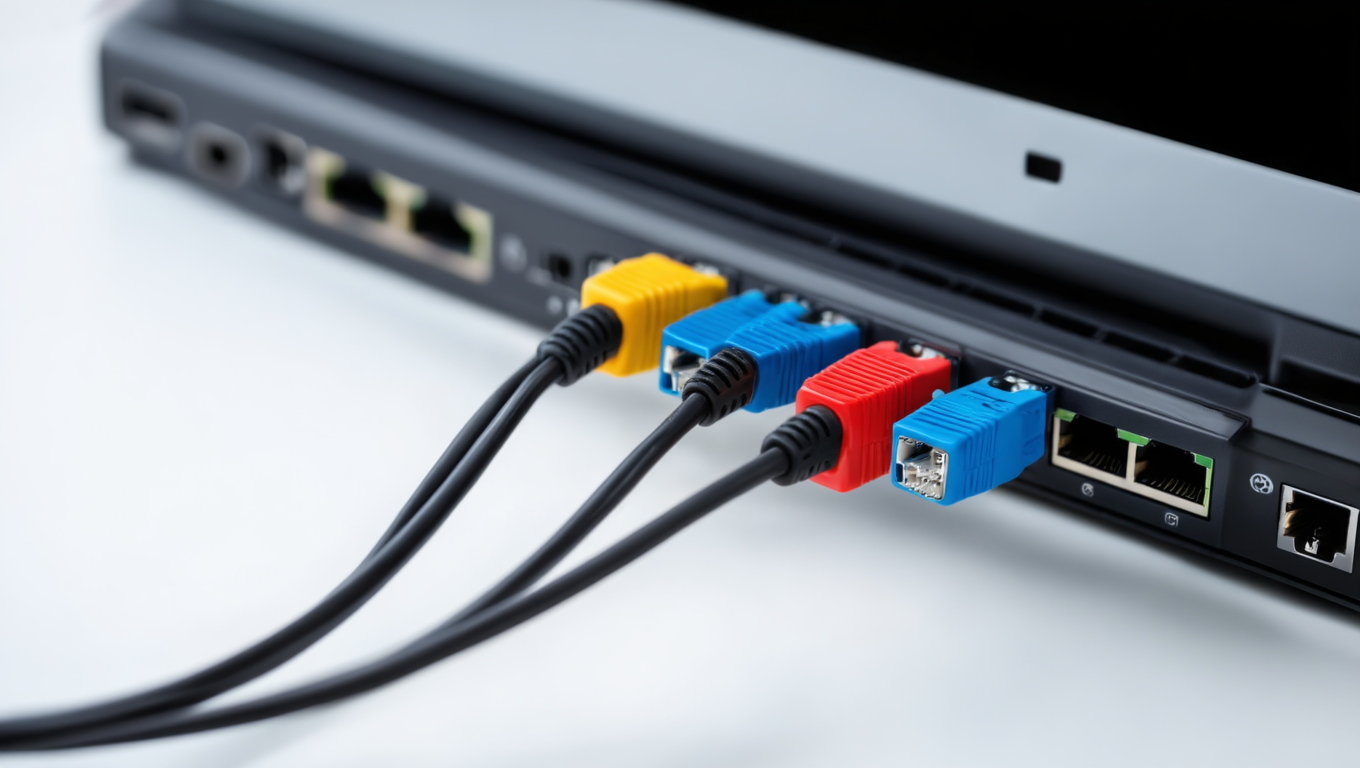🌐 AWS Networking Deep Dive: How the US-EAST-1 Outage Exposed the Fragility of Cloud Connectivity
Learn how the AWS US-EAST-1 outage exposed weaknesses in cloud networking. Explore DNS, VPC, load balancers, and PrivateLink — and how to build fault-tolerant architectures.

Date: October 20, 2025
Category: Cloud Infrastructure & Networking
Tags: AWS, Networking, Cloud, DNS, DevOps, VPC, Load Balancer, Route 53
🧭 Introduction
The October 2025 AWS US-EAST-1 outage reminded the tech world of an uncomfortable truth:
even the world’s most resilient cloud infrastructure is only as strong as its network layer.
When a DNS resolution issue disrupted communication between core AWS services, the incident cascaded through load balancers, VPC routing, and private endpoints, impacting more than 80 AWS services globally.
Understanding what happened requires a look beneath the surface — into the AWS networking stack, where reliability, latency, and service discovery intersect.
⚙️ The Foundation of AWS Networking
AWS networking is built on a complex hierarchy of systems designed for scalability, isolation, and speed.
At the core lies the VPC (Virtual Private Cloud) — a logically isolated section of the AWS Cloud where resources communicate securely.
🔹 Core AWS Networking Components
| Layer | Component | Function |
|---|---|---|
| DNS Layer | Amazon Route 53 | Domain and endpoint name resolution |
| Routing Layer | VPC, Subnets, Route Tables, Internet Gateways | Direct network traffic inside and outside AWS |
| Edge Layer | CloudFront, Global Accelerator | Content delivery and latency optimization |
| Security Layer | Network ACLs, Security Groups, AWS Network Firewall | Traffic filtering and intrusion prevention |
| Connectivity Layer | Transit Gateway, Site-to-Site VPN, Direct Connect | Connects multiple VPCs and on-prem networks |
| Load Balancing Layer | Elastic Load Balancing (ELB), ALB, NLB | Distributes traffic to healthy endpoints |
| Private Access Layer | VPC Endpoints, AWS PrivateLink, VPC Lattice | Internal service connectivity without the public internet |
Each layer depends on DNS for service discovery, making it the single most critical link in AWS’s internal communication fabric.
🧩 What Happened During the Outage
At approximately 12:26 AM PDT, AWS identified increased error rates for DynamoDB API endpoints in the US-EAST-1 region.
By 2:01 AM PDT, the issue was traced to DNS resolution failures, which prevented internal services from locating essential endpoints.
Because nearly every AWS service uses internal DNS-based routing, the failure propagated through multiple networking components simultaneously:
Impacted Networking Systems
- Amazon Route 53 – internal resolution degraded
- Elastic Load Balancing (ELB, ALB, NLB) – failed to locate EC2 targets
- Amazon VPC PrivateLink – endpoint connectivity lost
- VPC Lattice – cross-service communication stalled
- NAT Gateways – inconsistent outbound routing
- Transit Gateway – partial traffic interruptions between VPCs
- Global Accelerator – increased latency for multi-region apps
- CloudFront – unreachable origins for dynamic content
The result: even workloads that were technically healthy could no longer communicate, authenticate, or replicate data because network resolution had failed.
🔒 The Role of DNS in AWS Networking
DNS is not just a name resolution tool — in AWS, it’s the glue that binds microservices together.
When a Lambda function, EC2 instance, or RDS cluster calls another AWS service, it doesn’t use hardcoded IPs — it uses service names that AWS resolves via internal DNS.
For example:
ec2.us-east-1.amazonaws.com
dynamodb.us-east-1.amazonaws.com
rds.us-east-1.amazonaws.com
These are logical service endpoints, and when DNS breaks:
- The endpoint cannot be found.
- Load balancers can’t register healthy targets.
- Auto Scaling can’t attach instances.
- Internal API calls timeout or fail authentication.
During the outage, this single layer caused a chain reaction from API Gateway to CloudWatch.
⚡ Load Balancers and Routing Under Stress
1. Elastic Load Balancing (ELB / ALB / NLB)
- Could not route new requests as target IPs were unresolved.
- Health checks failed, causing false-positive instance deregistrations.
- Applications relying on ALB DNS (e.g., microservice ingress controllers) lost connectivity.
2. Amazon CloudFront
- Edge nodes failed to fetch data from origin servers due to failed DNS lookups.
- Resulted in high latency or 5xx response codes for web applications.
3. AWS Global Accelerator
- Multi-region traffic rerouting slowed as endpoint resolution degraded.
4. NAT Gateway and Transit Gateway
- Both dependent on stable routing tables and network endpoints.
- Temporary packet loss occurred during DNS-related reconvergence.
🛡️ Security and Access Layer Effects
Security layers such as AWS Network Firewall and PrivateLink were also impacted.
- PrivateLink connections depend on private DNS resolution to access AWS APIs securely.
- When DNS failed, PrivateLink endpoints became unreachable.
- IAM and STS authentication services (which rely on DNS) experienced delayed responses — indirectly affecting networking authorization.
🧠 The Chain Reaction Explained
Here’s how the failure propagated through AWS’s networking ecosystem:
DNS Failure
↓Internal API Endpoints Unreachable
↓Load Balancers Fail Health Checks
↓
VPC Endpoints Disconnect
↓EC2 and Lambda Can’t Connect to Dependent Services
↓Auto Scaling and Elastic IP Provisioning Delayed
↓Global Network Latency and Regional Slowdowns
This cascade effect shows that DNS sits at the foundation of cloud networking reliability.
🧩 Recovery Steps and AWS Response
AWS engineers implemented multiple mitigation paths:
- Restored DNS resolution paths using redundant resolvers.
- Flushed and repropagated internal DNS caches.
- Stabilized ELB target registration.
- Rate-limited new EC2 launches to prevent overload.
- Validated PrivateLink and VPC endpoint recovery.
By 3:35 AM PDT, DNS issues were mitigated.
By 6:42 AM PDT, most networking services, including EventBridge and CloudTrail, were stable.
EC2 launches remained rate-limited until mid-morning.
🧰 Best Practices for Network Resilience in AWS
- Use Multi-Region Architectures
- Deploy redundant workloads outside of
us-east-1. - Use Route 53 latency-based routing or failover policies.
- Deploy redundant workloads outside of
- Implement DNS Redundancy
- Configure external resolvers (e.g., Cloudflare, Google DNS) for hybrid workloads.
- Design Load Balancer Fallbacks
- Use weighted routing and health-based traffic splitting.
- Monitor Internal DNS and API Health
- Integrate custom checks for
*.amazonaws.comresolution.
- Integrate custom checks for
- Enable Cross-VPC Failover with Transit Gateway
- Maintain alternate network paths in case of endpoint isolation.
- Plan for Degraded Mode
- Ensure applications can cache or retry service lookups gracefully.
🧭 Key Takeaway
The AWS outage proved that networking is not just about bandwidth — it’s about service connectivity.
A single DNS fault can paralyze even the most advanced cloud platforms.
The lesson is clear:
“In the cloud, your uptime depends on the invisible — the network paths and name resolution behind every API call.”
📍 Source: AWS Service Health Dashboard
📘 In-depth Report: Dargslan Publishing – AWS Outage Analysis
If you want to master AWS networking, routing, and fault tolerance,
visit 👉 dargslan.com — your professional guide to cloud infrastructure, DevOps, and system design.




